Art World
A Major Show Revisits How Yves Klein Harnessed Fire, Water, Air, and Flesh
From the elemental to corporeal to ecclesiastical, a wondrous new exhibition at New York's Lévy Gorvy Dayan reveals the physical world of the iconoclastic painter.
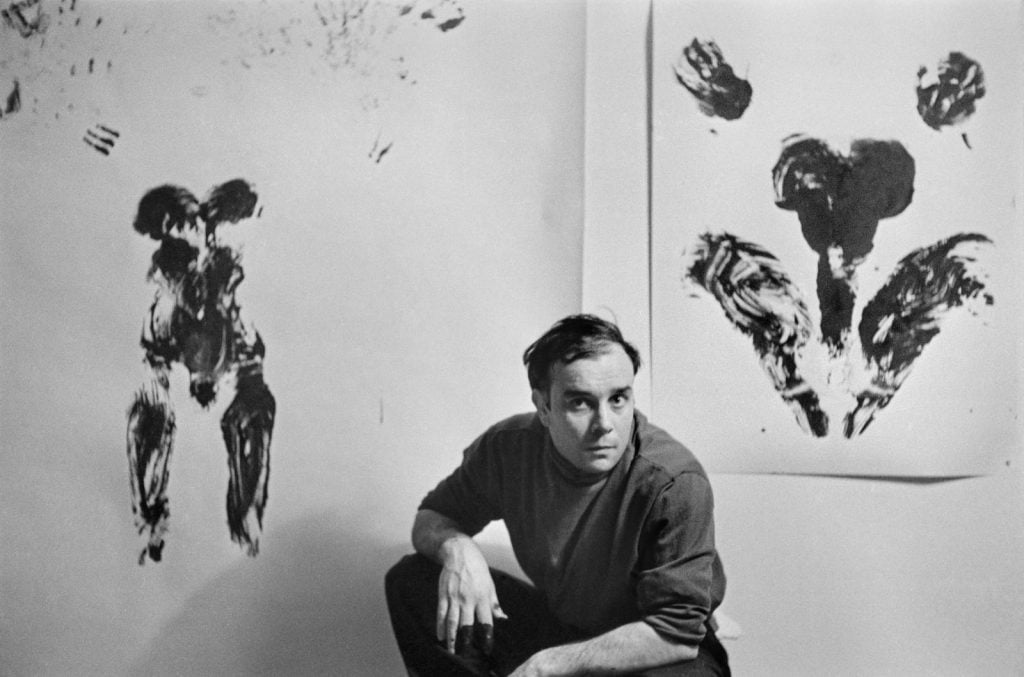
People talk about art as a healing force, but New York dealer Brett Gorvy is very literal on that, at least in the case of a particular work by one of the giants of postwar art, Yves Klein.
Lévy Gorvy Dayan has opened a show, “Yves Klein and the Tangible World,” that includes a May 1 performance of that piece, the French artist’s Monotone-Silence Symphony (conceived 1947-49), in which an orchestra performs a single tone for 20 minutes followed by 20 minutes of silence. Gorvy says that when he saw Lévy’s last staging of the piece, in San Francisco in 2017, it soothed the pain he was suffering two weeks after a surgical operation. There were 1,500 souls in the audience, he said, but you didn’t hear a single cough. (Take it from someone who saw a previous performance Lévy staged, in New York, in 2013: it was unforgettable.)
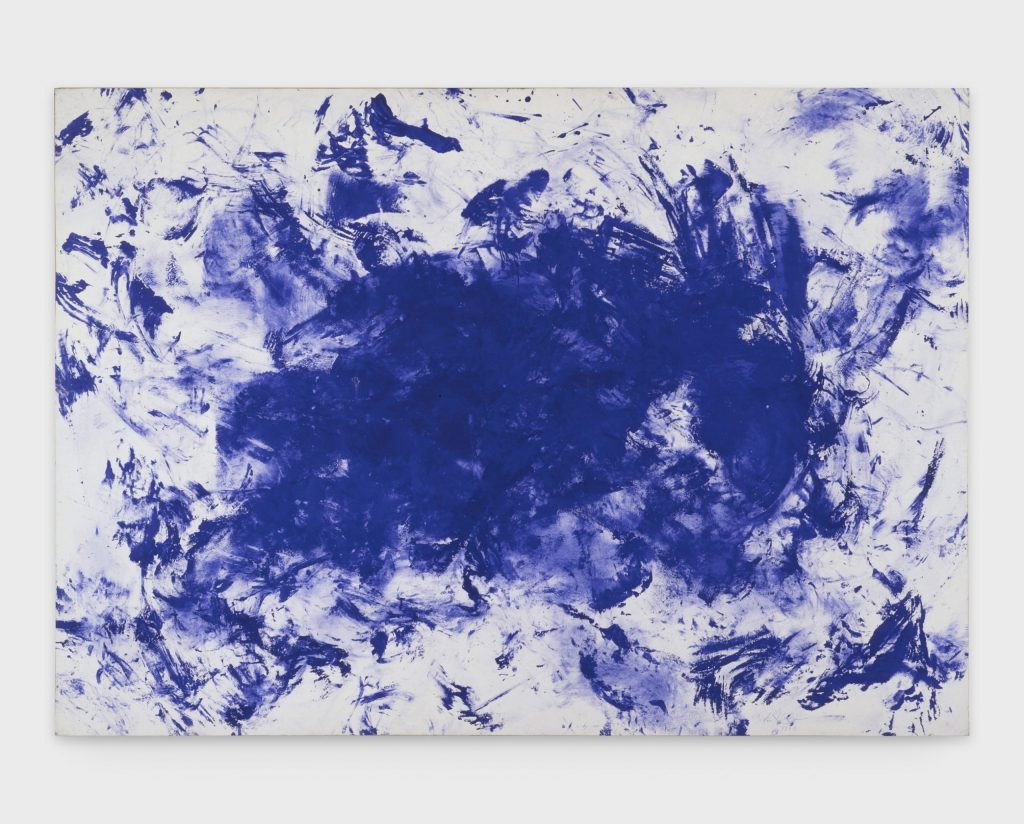
Yves Klein, Anthropométrie sans titre (c. 1961). Courtesy Lévy Gorvy Dayan, New York.
Organized in collaboration with the Yves Klein Foundation, the impressive exhibition features more than two dozen works, some of which haven’t been seen on these shores for decades, along with one that is, to the dealers’ knowledge, unique among Klein’s oeuvre.
The artist is partly known for literally immaterial works; in 1958, he made a smash by showing a vacant gallery in Paris under the title Le vide (“The Void”), and he sold “zones of immaterial pictorial sensibility,” in which collectors bought empty space, for which they received a receipt and a piece of gold leaf. There’s his meme-worthy Leap into the Void, a 1960 photograph showing him apparently launching off a building into the street below. Also well-known are his monochromes in International Yves Klein Blue, and a floor monochrome does appear in this show, a 17-foot-long powdery moonscape.
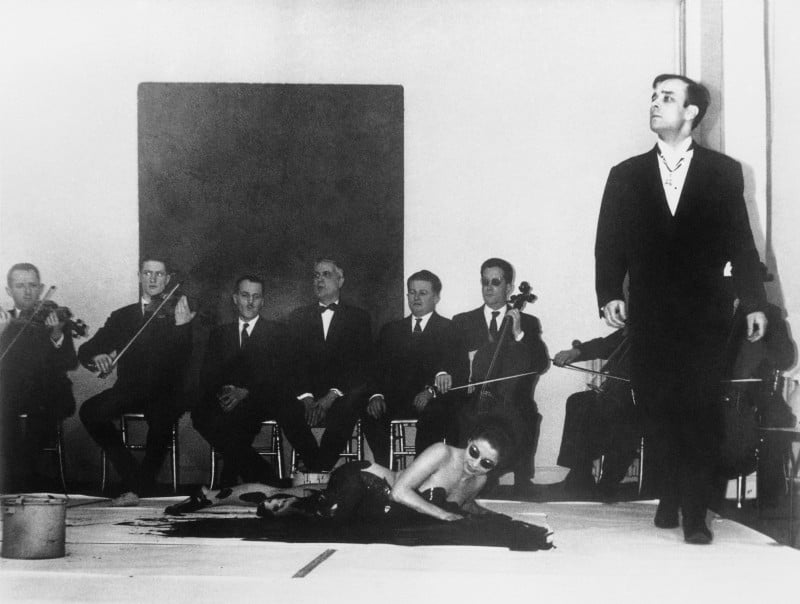
Yves Klein realizing an “Anthropometry of the blue period” in the Galerie Internationale d’art contemporain, Paris, France, 1960, Photograph © Harry Shunk and Janos Kender J.Paul Getty Trust. The Getty Research Institute, Los Angeles. Courtesy of Lévy Gorvy Dayan, New York.
But in this show, as per the title, the gallery stresses Klein’s engagement with the corporeal. “It’s a true love poem to the body,” said Lévy.
A major focus is two bodies of work that employ the human body and fire, some of which depart from the trademark blue into burnt oranges and violets. The show has some 17 examples of his “Anthropométries” (1960-62), in which he choreographed naked women slathered with paint, who pressed their bodies against canvases; he called them his “living brushes.” There are also five of his “Peintures de Feu” (Fire Paintings, 1960-62), in which he used a torch to mark canvases, a fireman at the ready with a hose, so that two of the elements, fire and water, are called into service; one of them, a symphony in shades of rust and black, stretches some 10 feet wide. Archival photos show him and his models creating the former paintings; one video brings those still images to life, while another shows him torching canvases to create the latter.

Yves Klein realizing a Fire Painting, 1962 (photo by Louis Frédéric, courtesy Lévy Gorvy Dayan © The Estate of Yves Klein co ADAGP, Paris
As Lévy explained during a visit to the show, the works pulse with life, partly because they were so informed by death; born in 1928, Klein was deeply moved by a trip to Japan, where he witnessed the remnant silhouettes from the aftermath of Hiroshima. Those shapes would reappear in the outlines of the body in his “Anthropométries.”
“Klein found beauty in dark times,” Lévy told me, and acknowledged that humankind is in a dark moment of war and conflict again.
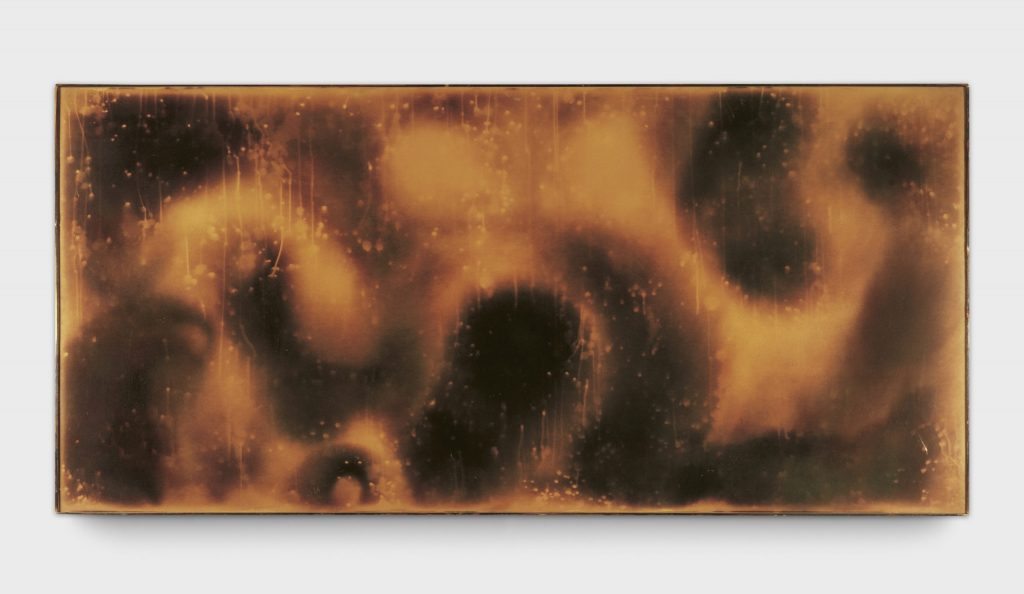
Yves Klein, Peinture de feu sans titre (F 24) (1961).Courtesy Lévy Gorvy Dayan, New York.© The Estate of Yves Klein c/o Artists Rights Society (ARS)- ADAGP-Paris, New York.
Visitors are greeted by a massive canvas defined mostly by the impression of paint-slathered human bodies; at nearly 14 feet high, it’s one of his largest works, and, having been on long-term loan, it hasn’t appeared in the U.S. since it was on view at the Jewish Museum in the 1960s.
One small Anthropométrie here was created using Klein’s own body; it’s the only one Lévy knows of. A small, curtained-off room (it’s easy to miss) displays four “Shroud” Anthropométries, on an especially translucent fabric; Lévy is unaware of them ever having been shown in the U.S. As a Catholic, Klein was moved by the tale of the Shroud of Turin, in which Christ’s face was miraculously imprinted on a cloth that a follower used to dry his face during the Passion. The Christian tale of death and resurrection are thus on the scene as a recording of the Monotone-Silence Symphony plays quietly.
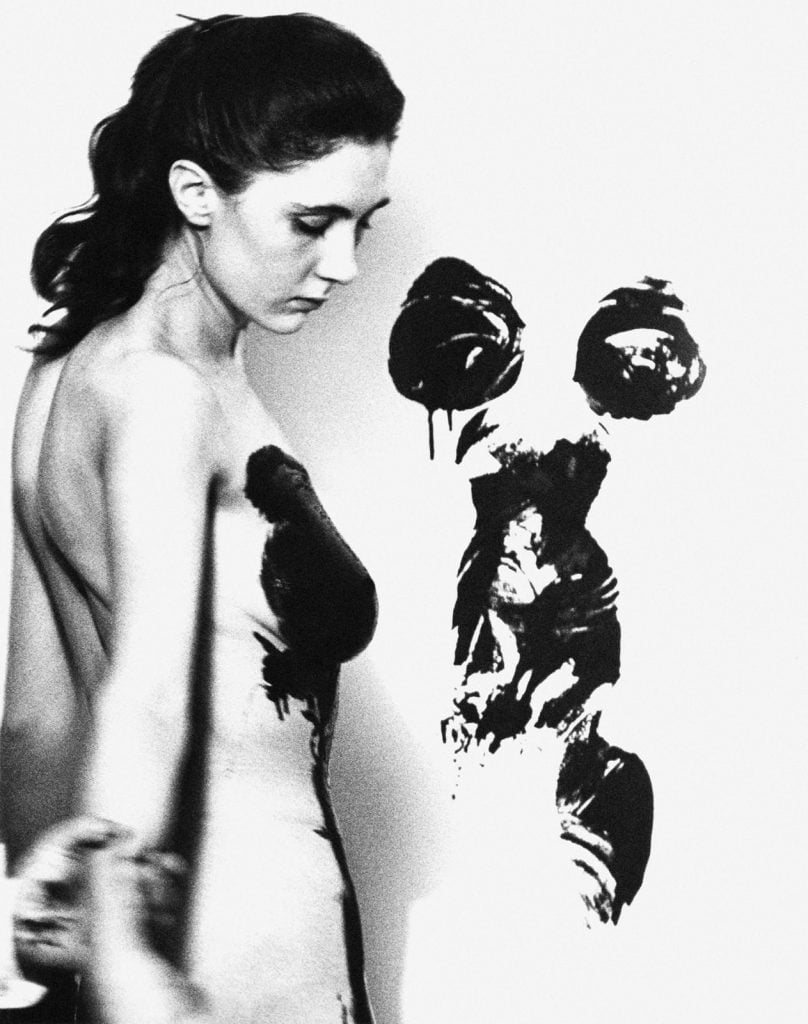
Realization of an Anthropometry with Michèle in Yves Klein’s studio, 1960. Photograph © Harry Shunk and Janos Kender, J.Paul Getty Trust, the Getty Research Institute, Los Angeles.
The performance of Monotone-Silence Symphony will take place at St. James Church in New York at 6:30 p.m. on May 1. Klein described the piece as consisting of “one unique continuous ‘sound,’ drawn out and deprived of its beginning and of its end, creating a feeling of vertigo and of aspiration outside of time… In the world of our possibilities of conscious perception, it is silence—audible perception.”
If visitors haven’t gotten enough Klein, they can also take with them a reproduction of a self-published single-sheet Sunday newspaper that the artist issued on November 27, 1960, with the famous Shunk-Kender photo Leap Into the Void and stories like “Theater of the Void,” “Pure Sensibility,” “Capture of the Void,” and “Monochrome Stupefaction.”
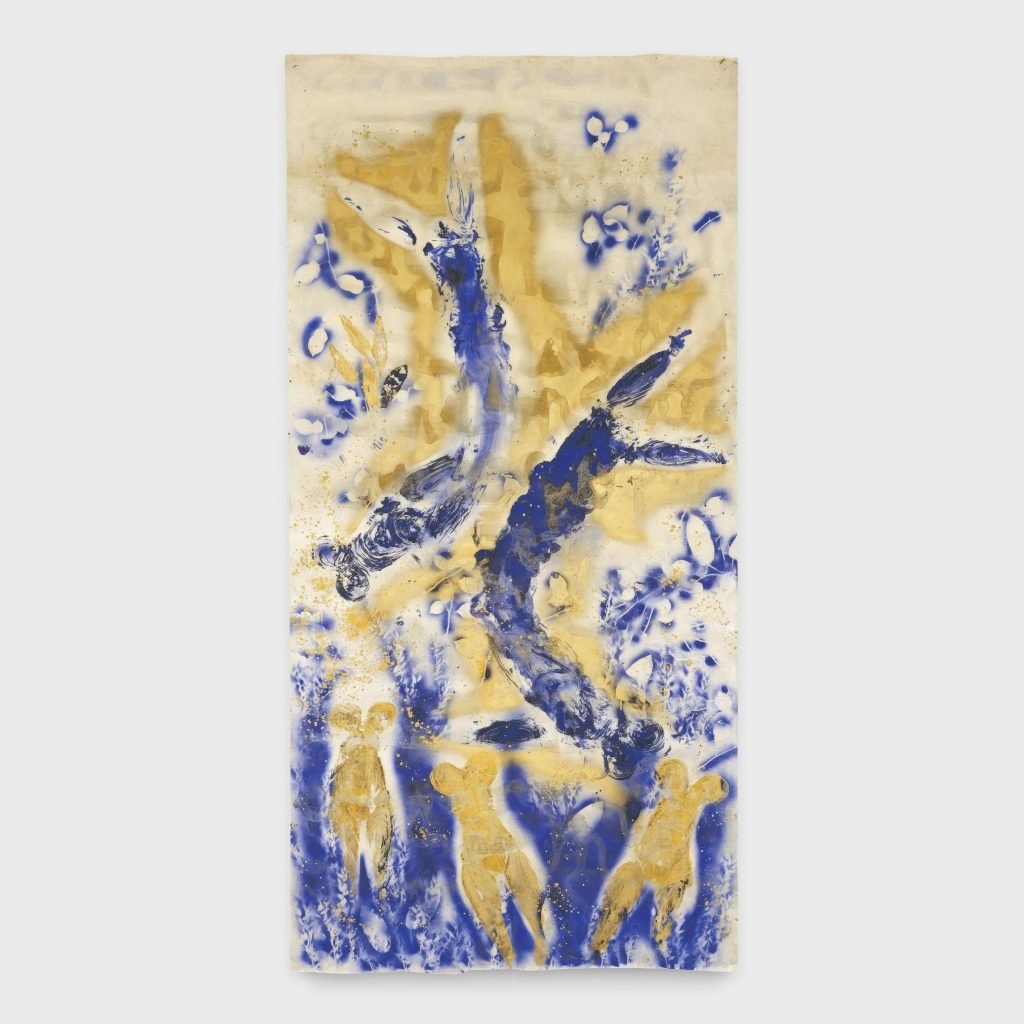
Yves Klein, Untitled Anthropometry (ANT 101), 1960, © The Estate of Yves Klein c/o Artists Rights Society (ARS), New York ADAGP, Paris and courtesy of Lévy Gorvy Dayan.
But wait. Before you go, there is, finally, a sculpture-performance that Klein conceived of ca. 1957 but never realized. (Major spoilers follow.) Tactile Sculpture consists of a simple, white wooden box standing a few feet above the ground; visitors reach inside via two holes on opposite sides, fitted with sleeve-like fabrics so they can’t look in.
They find that it’s warm inside, and, as they grope around, they soon find the reason: a naked performer sits in the box. Lévy staged it once before, at Independent Projects in 2014. (This reporter went gonzo and sat inside for an hour.) A colleague, knowing what was inside, grimaced at the prospect of reaching in; another visitor literally shouted upon realizing what he was touching. The piece will be “activated” with human performers on Thursdays and Saturdays from 2 to 6 p.m.
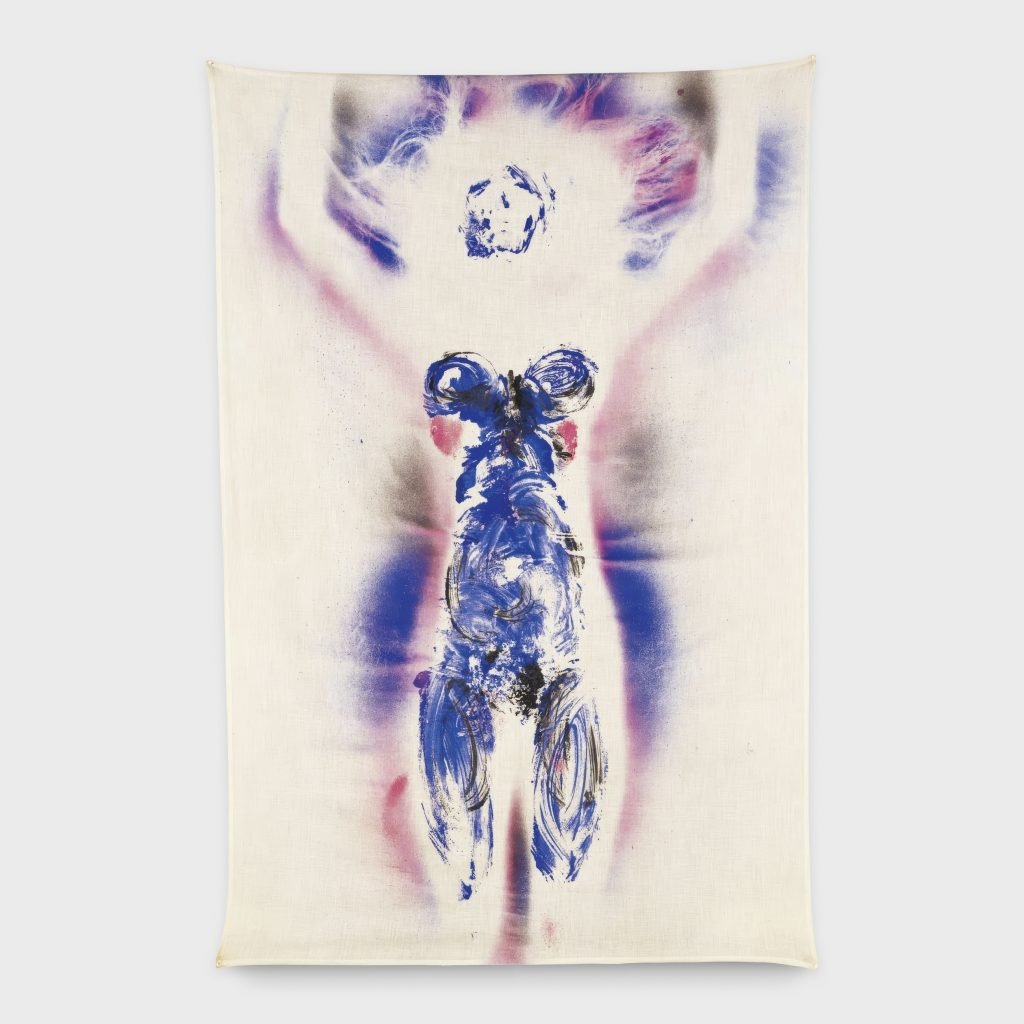
Yves Klein, Anthropométrie suaire (Vampire) (1960). Courtesy Lévy Gorvy Dayan, New York. © The Estate of Yves Klein c/o Artists Rights Society (ARS), New York: ADAGP, Paris and courtesy of Lévy Gorvy Dayan.
“The point,” Klein wrote in a 1957 journal entry, “was simply to place living sculptures in these boxes—beautiful nude models, with generous curves, of course.” He explained in the same entry why, even for a provocateur like him, the piece was a bridge too far. “It was a little premature at the time,” he wrote. “I would have had the police on my back right away.”
After touring the exhibition with Lévy, I stopped in to reach into the sculpture one last time. The room was empty and silent. I briefly placed my hand on the performer’s shoulder. It was a moment of communion with a fellow-human like none other.
“Yves Klein and the Tangible World” is at Lévy Gorvy Dayan through May 25, 2024.





